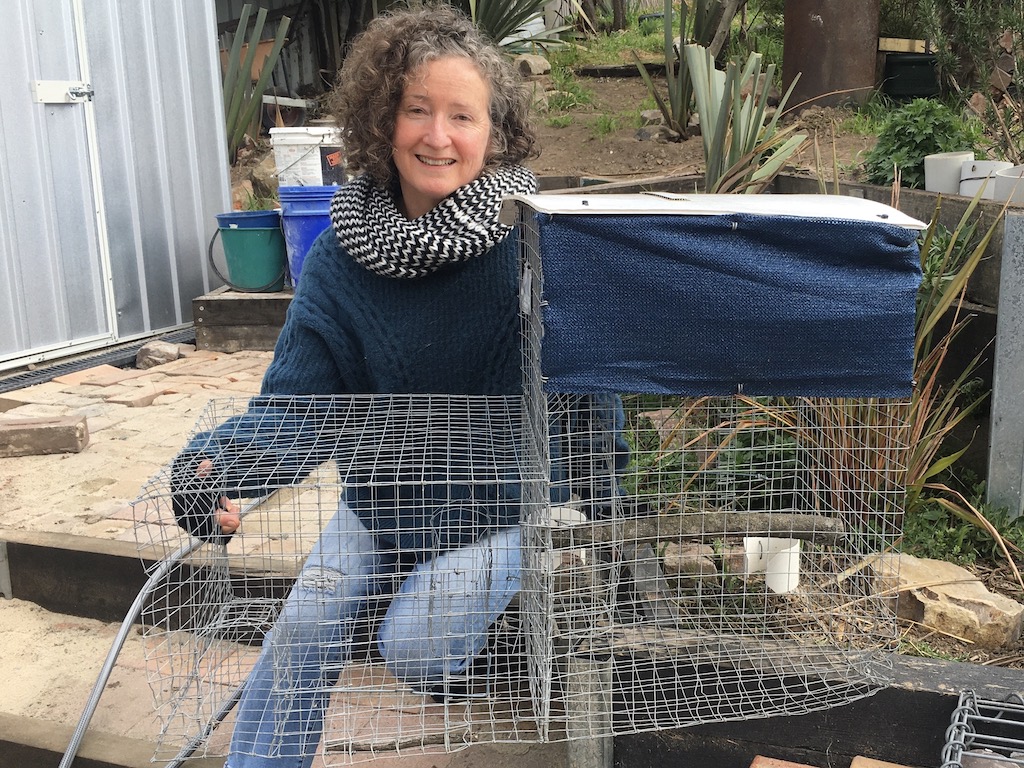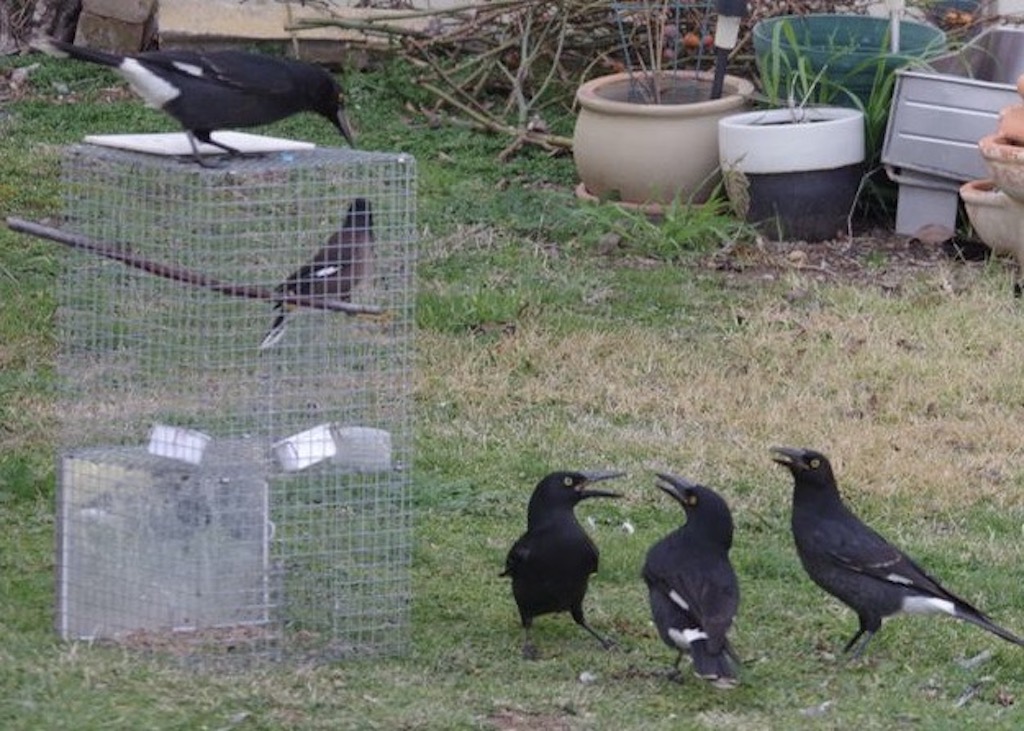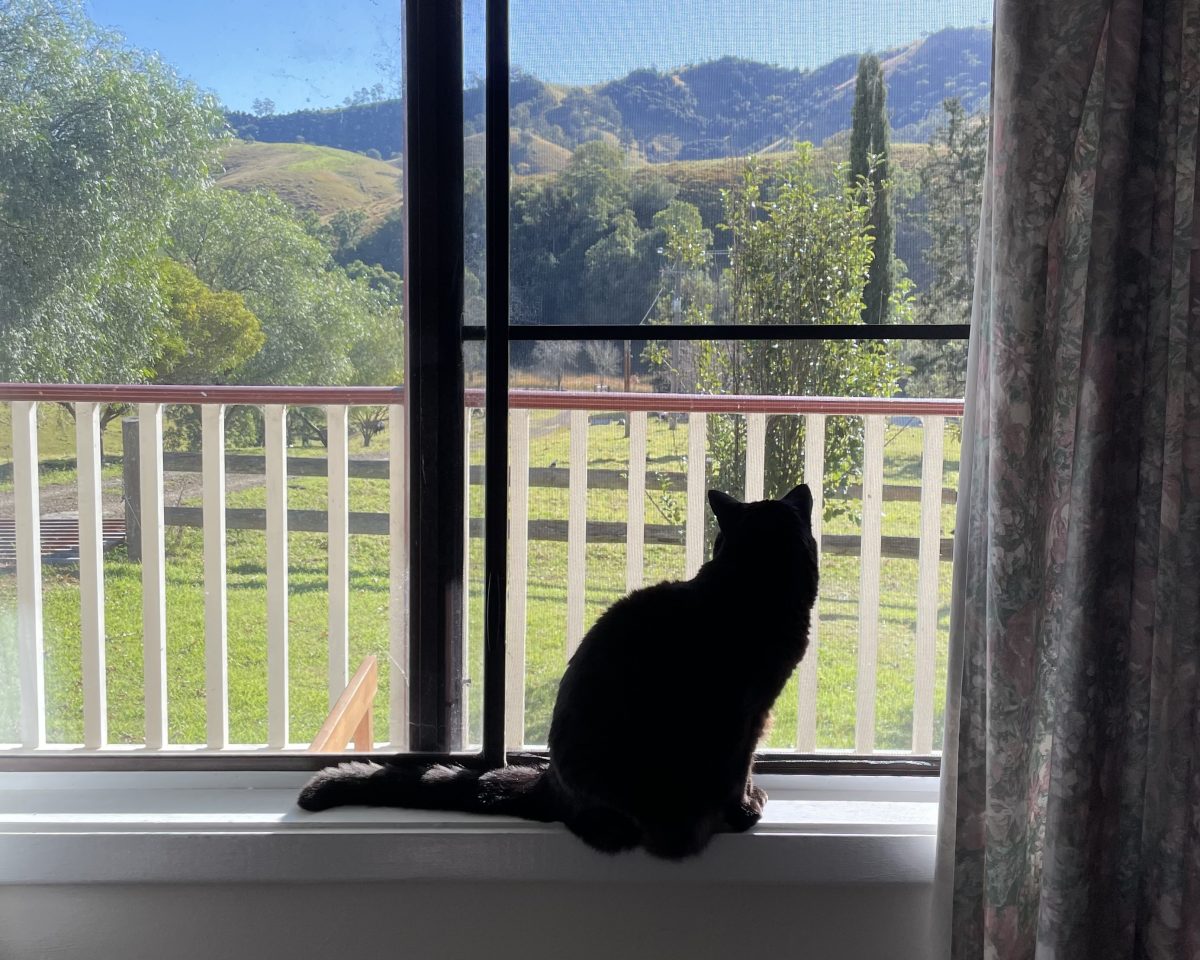
Sue Theron with an Indian myna trap. A meeting will be held at the Goulburn Workers Club at 5:30 pm on 21 August to inform people about obtaining traps and how to use them effectively and humanely. Photo: John Thistleton.
Sue Theron misses seeing more blue-tongue lizards and little wrens, and hearing frogs croaking, in her backyard in Sloane Street, Goulburn.
Feral cats in Sue’s neighbourhood are a massive problem.
“In the last year or so, there were a lot of frogs around here, you could hear them, and suddenly they are gone,” she said.
“I bought this house in 2018 because of the garden and the birdlife in the backyard,” said Sue, an architect who has trapped four feral cats in the lane at the rear of her place. They were taken to the animal shelter and euthanased.
“I noticed Indian myna birds in that short time becoming very rampant. Once you realise what is going on, it became pretty clear that something had to be done.”
Sue launched the Goulburn Indian Myna Action Group and in 2019 convened two meetings, at which the Canberra Indian Myna Action Group attended to share its resources and knowledge on designing traps and humanely disposing of the bird. The Goulburn group is also focused on feral cats.
Sue has established a Facebook page, Goulburn Myna Action, which now has more than 200 members and established an arrangement with the Clinton Street Veterinary Clinic to help euthanase birds.
“We have distributed 20 traps around the community,” she said. “They cost about $50. I would like to see people lending traps to others if they are not in use.”
Sue would also like to see more people volunteer to help.
“It could be just small actions: run PowerPoint training sessions; distributing pamphlets and posters to educate people,” she said.
“I am unable to do it all myself; we need to get more people involved. The best thing people can do is get themselves a trap and educate themselves on how to use it.”

Currawongs drawn to a trapped Indian myna in Chisholm Street, Goulburn. Traps need checking and can also capture crested pigeons and other species that should be released. Photo: Darryl Fernance.
Photographer Darryl Fernance, in Chisholm Street, Goulburn, has done just that and has since trapped 300 Indian mynas and 200 starlings.
He has not been as busy recently with trapping but plans to start again in spring.
“The more trapping the better. Starlings are a huge pest for grape growers,” he said.
Sue said trapping was effective.
“I think I have disposed of 120 [birds] in my area over a year, so you can make quite a dent and get rid of the local menace. And just spread the word,” she said.
Indian mynas can have three clutches of up to eight chicks a year and compete with native animals for nesting sites. They kill the chicks of other birds, or destroy their eggs.
“They will be starting to nest very soon,” Sue said. “They target under solar panels, roof cavities and double-brick walls of older houses.
”They can block off walls with their nests. They are very prolific. A lot of people are fed up with them but don’t know they can do something about them.”
The next informal training session will be held at the Goulburn Workers Club at 5:30 pm on Monday, 21 August.
“I’m an animal lover and you don’t want to think about eradicating animals,” Sue said.
“But I think we are at a time where there have to be tough choices, it just seems like a responsible thing to do. The motivation behind this is native birds and lizards and trying to maintain the ecosystem for them.”
Sue has found trapping cats easier in some regards than trapping Indian mynas.
“You will know if you catch a cat whether it is feral, it is a wild animal,” she said.
”If it doesn’t appear to be feral, it may be neglected or not microchipped.
”You should be able to take it to the pound and they can hold it. If not, they get a responsible person to adopt it.
“You can trap them within two days. You need cable ties on the cage. They are so strong they can break through the cage and you need to wear leather gloves and use a ute.
“Don’t put it [the trap and cat] in the back seat of your car.”

After catching a sugar glider, this cat has been converted to an indoor lifestyle. More enclosures are appearing for sale online, indicating people are being more responsible with their pet cats. Photo: Candice Bartlett, Invasive Species Council.
At times, the animal shelter had been so overrun with cats it could not accept any more, Sue said.
Goulburn Mulwaree Council does not have a cat-containment policy and does not provide voluntary feral-cat traps.
“Council accepts both stray and feral cats with the intent to return the animal to its owner,” a spokeswoman said. “However, if they are unable to be claimed by owners, they are euthanased.”






